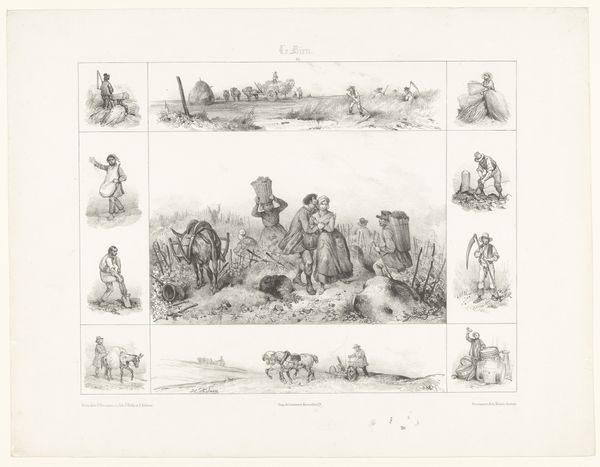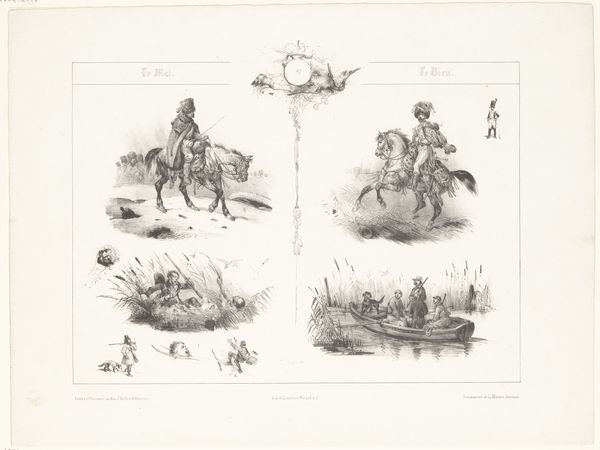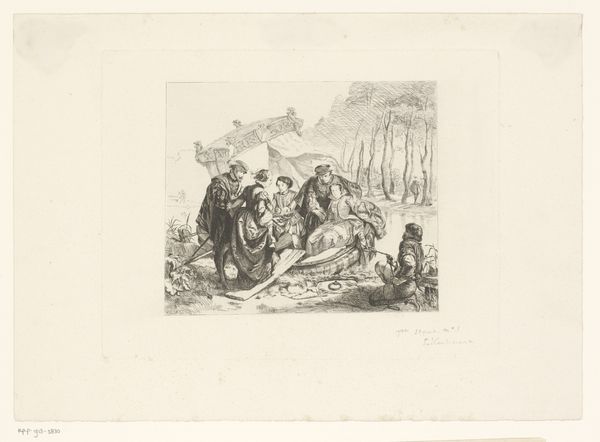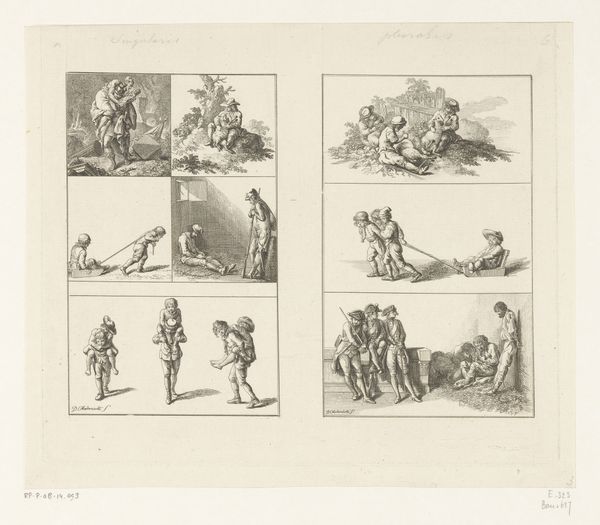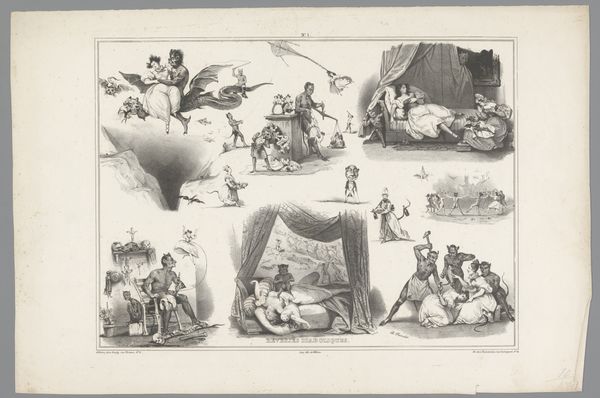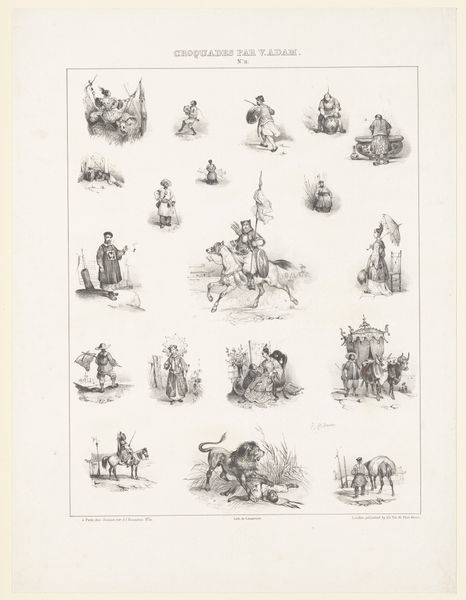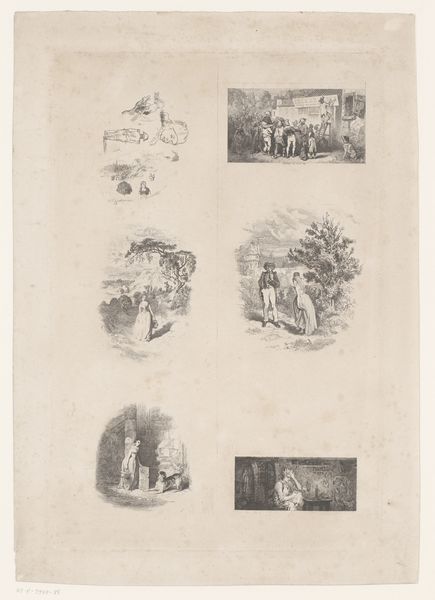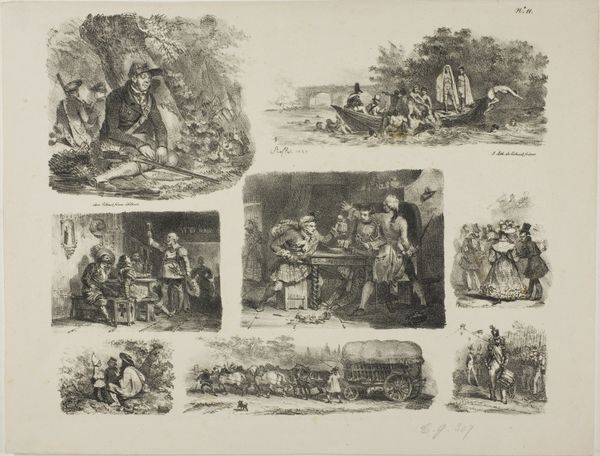
drawing, print, etching
#
drawing
# print
#
etching
#
landscape
#
figuration
#
romanticism
#
genre-painting
Dimensions: height 262 mm, width 316 mm
Copyright: Rijks Museum: Open Domain
Curator: Alexandre-Gabriel Decamps’ "Zes voorstellingen van figuren en dieren," created in 1829, combines etching with printmaking techniques. There’s a real storytelling quality to each of these vignettes, capturing everyday scenes with a charming energy. How would you unpack this piece from a material perspective? Editor: Well, initially, I am struck by the choice of printing techniques for depicting these intimate scenes. The detailed work achieved through etching gives the figures and landscapes an intense focus. How did these methods and their availability in the 19th century affect the artwork? Curator: Precisely! The 19th century saw an explosion in printmaking’s accessibility, fuelled by industrial advancements. Etching, traditionally a craft demanding skilled artisans, started merging with mass production. These scenes are infused with the spirit of Romanticism, and its idealization of rural life and working-class activities. But the etching also became a commodity. Do you see how the romantic vision may or may not extend to the social position of working people? Editor: That’s a really good point! The prints portray peasants and idyllic scenes, but it was probably made for a more privileged audience. It makes me question who actually benefits from these portrayals of labor and countryside. Curator: Absolutely. Think about the labor involved in creating the printing plates, producing the paper, and the distribution of these prints. These weren’t luxury objects, but commodities circulating in a growing market. It reveals how art became entwined with burgeoning capitalism and shaped perceptions of class and labor. Editor: So, it is about how art can reproduce social identities by exploring the real conditions of art making. Thanks, that really helped me see how the means of production can impact what is being shown and understood. Curator: Exactly! By considering these prints as products of their time, rooted in material processes and socioeconomic forces, we gain a richer understanding. I found the discussion of the conditions of work very illuminating!
Comments
No comments
Be the first to comment and join the conversation on the ultimate creative platform.
